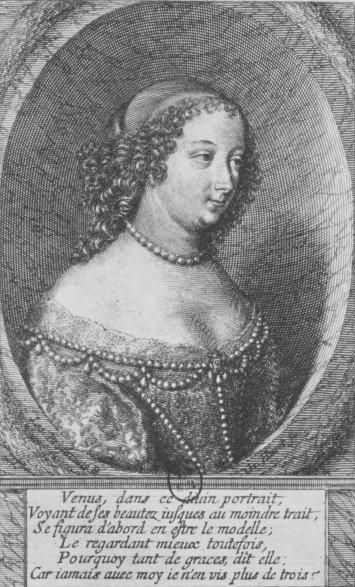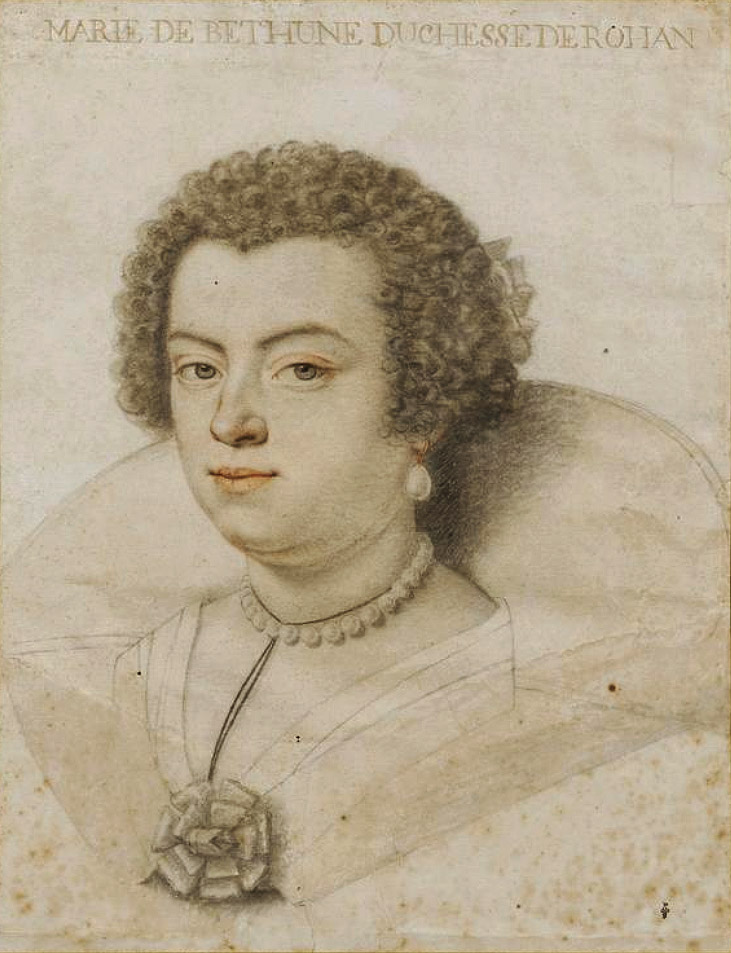Royal marriages was the epitome of a state affair. They depended entirely on the negotiations between the two parties - typically various nations - involved and thus did not cater to personal preferences. Every marriage of the French royal family at Versailles consequently had political overtones with only a few exceptions; these were the so-called "secret" marriages, typically referred to as morganatic marriages.
As their denomination of "secret" infers, such marriages were private affairs, even to the point of doubt. At Versailles, the union of Louis XIV and Madame de Maintenon remained a topic of frustrating obscurity for years; the marriage was rumored to have taken place in the period August 1683 and June 1684, although a later date is more likely. As queen Marie Thérèse only died on 30 June 1683, it seems remarkably coldhearted of Louis to have remarried immediately after - especially as there was no pressing political or dynastic reasons.
The status of the royal mistress was frustrating as she was never proclaimed queen in public. The king bestowed several gestures on his mistress which indicated that they were married but refused to publicly acknowledge it.
Madame de Maintenon's position was typical of a morganatic wife. Her status was not recognised in either law nor public opinion which placed her in a legal limbo. Any children born to their union was not recognised as legitimate nor was she automatically entitled to an inheritance if her husband died first. The prohibition on inheritance stemmed from an ordinance from 1639.
 |
| Madame de Maintenon - notice the royal ermine? |
At court, such a marriage could have extremely detrimental effects. Not only were children not considered legitimate, they were barred from inheriting whatever title or rank their father had. Likewise, the spouse - typically the wife - would be prohibited from using her husband's rank or assume his surname. For instance, a duke who secretly married a woman would not be able to proclaim her a duchess nor would she be granted the prerogatives of this rank.
Oddly enough, the church fully recognised these marriages, provided that they had been performed according to the typical rites of the church.
Typically, such marriages were the result of a union between two people whose official marriage would otherwise be considered a mésalliance. Louis XIV - as king of France - was entirely unobtainable for most women at court, let alone a marquise of somewhat dubious origins. If Louis XIV had wanted to officially remarry, his bride would have been a princess of a foreign nation, presumably much younger than himself.
Ironically, Louis XIV's only son would also contract a secret marriage. Once again, the discrepancy in rank was a deciding factor. The Grand Dauphin had originally undergone his dynastic duty and entered into an arranged marriage with the Bavarian princess Marie Anne Victoire. However, the unappreciated bride died at the age of just 29 in 1690. This led the widowed Grand Dauphin to contract a marriage with his mistress Marie Émilie de Joly de Choin. Known at court as Mademoiselle de Choin, she had little to demand such an exalted match. Her father had been a baron which was the lowest rank of nobility; meanwhile, she was not considered to be particularly bright or beautiful.
 |
| Mademoiselle de Choin |
The couple married in secrecy in 1694 which prompted speculation as to what the king would do. While the Grand Dauphin had technically done his duty and produced three male heirs, tragedies did happen. As for Louis XIV, he did nothing. This has further been interpreted as a sign that he, too, had contracted a morganatic marriage which would leave him in no position to publicly punish his son. Unlike the king, the dauphin made no attempt at hiding the true nature of his relationship with the former Mademoiselle de Choin. When writing to Madame de Maintenon on 19 July 1694, he formally referred to Marie Émilie as his wife.
Marie Émilie was granted the same pseudo-royal rank of Madame de Maintenon. While not officially given the title of dauphine, she hosted diplomatic visits and received personal visits from foreign envoys. Furthermore, despite still being officially referred to as Mademoiselle de Choin, Marie Émilie was given a chair while in the presence of royalty. Generally speaking, Marie Émilie was the perfect woman for a morganatic marriage, particularly as far as the king was concerned. She was neither grasping nor prone to flaunting her position with the heir to the throne; on the contrary, theirs appear to have been an actual love match. When the Grand Dauphin died in 1711, Marie Émilie retired entirely from court and refused the inheritance which Louis XIV was otherwise inclined to allow her.
Claudine Françoise Mignot made a career of marrying up. While her origins are somewhat obscure, she managed to contract a particularly impressive morganatic marriage. Her first marriage was at the age of 16 to Pierre de Portes d'Amblerieu who served as the treasurer of Dauphiné. After thirteen years of marriage, Pierre either died or the marriage was dissolved. Either way, the now 29-year old Claudine was free to remarry which she did to a maréchal de France: François de l'Hôpital. Her new husband was 75 years old but still managed to survive seven years of marriage. Upon his death, Claudine was set up quite nicely. Widowed twice at the age of just 36, her latest husband had left her a part of his considerable estate; by this time, she had educated herself to be entirely welcomed by the better society of Paris which enabled her to capture her next, and ultimate, prize: a former king. John Casimir had been king of Poland before being replaced by Michael I. He had then moved to Paris where Louis XIV made him welcome. It was while in Paris that he met Claudine whom he married in secret on 14 September 1672.
Sadly, or conveniently depending on your view, John Casimir died after just a few months of marriage. His will left Claudine an immensely wealthy woman and a mother to a young daughter. Claudine would later enter a nunnery where she eventually died.
 |
| Claudine Françoise while wife of the Maréchal de l'Hôpital |
In the following century, the Duc d'Orléans would marry - without Louis XV's consent - the widow Charlotte-Jeanne Béraud de La Haye de Riou, Marquise de Montesson. The marriage took place on 18 April 1773; it should be said that the Duc d'Orléans had been widowed for fourteen years at this point. Louis XV was highly displeased at this defiance and forbade her from assuming the title of Duchesse d'Orléans. Like Marie Émilie, Charlotte-Jeanne was from a modest background and had been the duke's mistress for years prior to their eventual marriage.
The choice of the Duc d'Orléans to remarry without royal permission was a downright challenge to the authority of his cousin. This meant that even when Louis XV himself had died and Louis XVI was on the throne, Madame de Montesson was still prohibited from becoming his official wife. When the duke died, she was not allowed to wear official mourning. It should be said that the union was not just unwelcome to the reigning family but also to the duke's own. His eldest son, the later Philippe Égalité, deeply resented his new stepmother and took months before he would agree to dine with her. He often suspected that she was unfaithful which hardly helped domestic happiness. In a twist of fate, Philippe would be guillotined during the revolution while Madame de Montesson was arrested but released - she would later join the court of Napoleon as a friend to Empress Josephine.
| Madame de Montesson |






.jpg)
